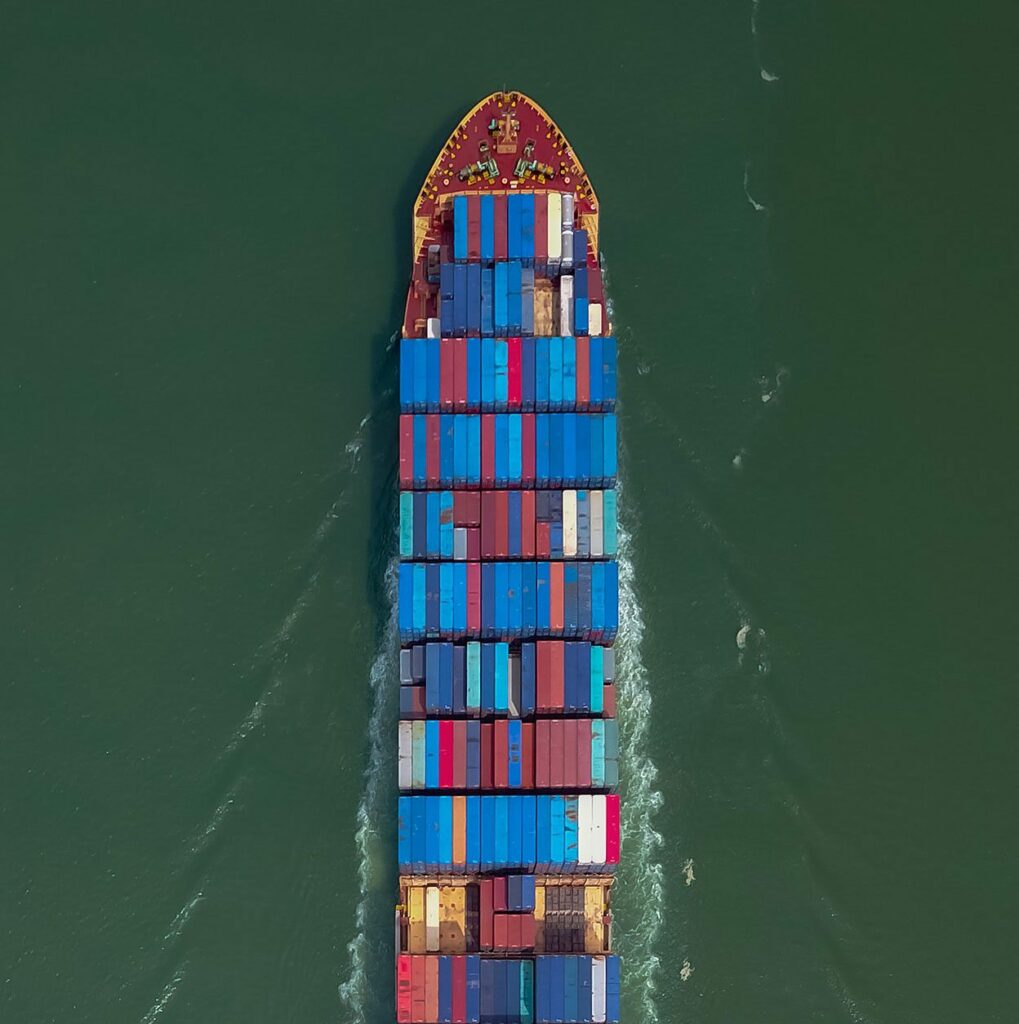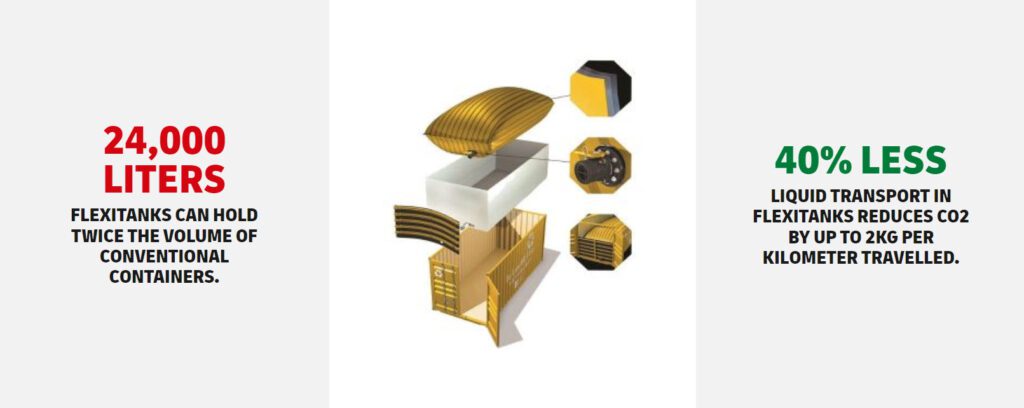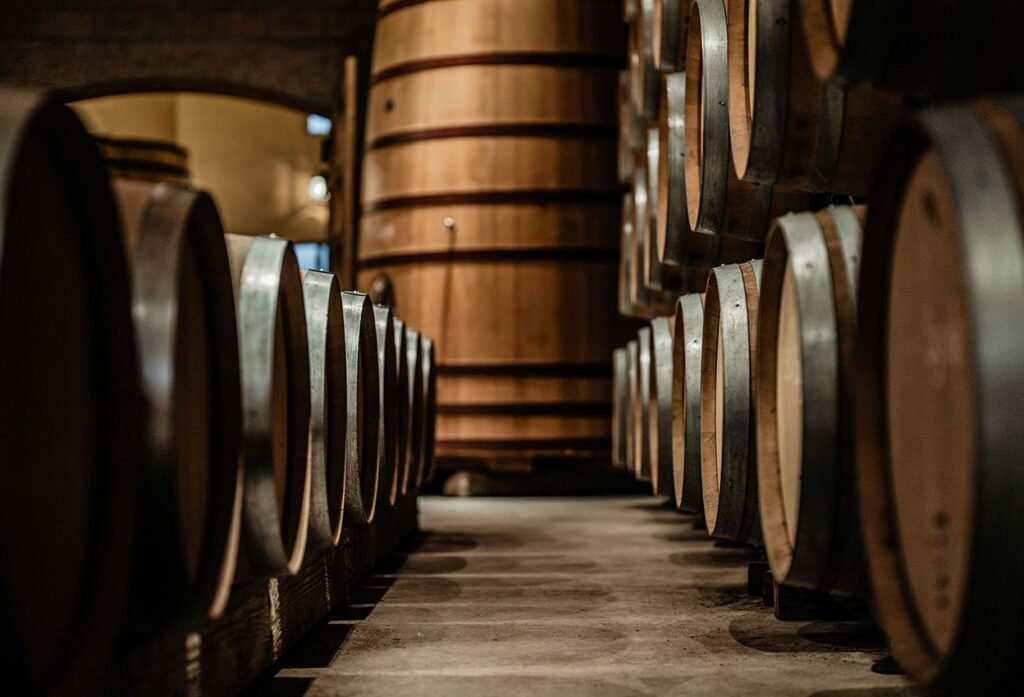
Liquid logistics: The fine art of wine transport

Ever since people learned out how to make wine, they also had to figure out how to transport it. In fact, liquid logistics has been around for as long as people have been buying or selling liquids. Some of the most common archeological finds from Ancient Greece are amphora, ceramic containers used in vast amounts to store and transport oils and wine, among other things. The wine amphora even became a standard measure, holding about 39 liters (41 quarts).
Today, 8,000 years on, the challenges of bulk wine shipping have not fundamentally changed. How do we prevent temperature fluctuations, oxidation, and contamination? How can we move as much volume at as little weight as possible? Wine transportation is a specialist field in the logistics industry – one best left to those wine shipping companies who know the liquid logistics supply chain inside out, from the vine to the vessel to the venue.
International wine transport is on the rise
Wine transport might be a niche in the logistics industry, but it is part of a growth trend. The volumes for beer, wine, and spirits (commonly known as BWS) and bulk liquids are expected to increase by around 5-7 percent per annum in the coming years. And that is despite the recent decline in the global consumption of alcoholic beverages. People may be drinking less alcohol these days, but plenty of wine is still being consumed: about 23.4 billion liters a year. And those who shun alcohol are reaching increasingly for pricier beverages. Non-alcoholic spirits are a good example.
There is also a trend towards more international wine shipping. The International Organisation of Vine and Wine (OIV) estimates that 45 percent of all wine transports cross at least one international border on their way from producer to consumer. Europe tops the bulk wine shipping chart with nearly 16,000 kilotons moved across the continent annually. North America comes in second with around half that amount, followed by Europe to North America and Europe to Asia.
The world of wine transport
Globalization is undoubtedly a driving force behind the growing interest in and availability of different wines from different places. So, while global wine consumption has plateaued, the need for international wine shipping services will continue to increase. The global village also makes it possible for nearly anyone to enter the marketplace. Businesses working with international wine shipping companies range from small local wineries to global players in the beverages industry. Downstream in the liquid transport supply chain we find retailers, airlines, hotels, and restaurants.
Bulk wine transportation is in the bag
Wine transport might be eight centuries old, but liquid logistics experts and wine shipping companies continue to find new and novel ways to solve age-old problems. For bulk liquid transport, the latest innovation is the Flexitank, which uses a bag to basically turn a standardized shipping container into a bulk liquid receptacle. For liquids that need to be kept at a specific temperature, the solution is combined with a reefer container.
In a conventional twenty-foot container, you can fit around 13,200 bottles – the equivalent of 9,900 liters of wine. A Flexitank more than doubles the volume to 24,000 liters. That not only saves costs but is also good for the environment. Compared to conventional wine transport a Flexitank can reduce carbon emissions by up to 40 percent, or around 2kg of CO2 per kilometer traveled.
Another lesser-known advantage of bulk liquid transport over bottles and other packaging is that the content is not as prone to sudden temperature changes, thanks to a physical property known as thermal inertia. Simply put, a 24,000-liter polythene bag heats up a lot slower than a one-liter bottle of wine.
Bulk wine shipping is also a trend in itself. For example, 40 percent of wine imports to the UK are bulk liquid transports, and 78 percent of all wine transports entering France in 2020 were in a bag, not a bottle.
Flexitanks
The liquid logistics solution for bulk wine shipping
Transporting wine bottles is about cool and clean
But what about wine still shipped in bottles? There will, of course, always be a need to transport wine in bottles and innovative wine transport solutions to do it. For example, to counter the effects of “container rain.” This is when condensation (water droplets) form in airtight containers due to temperature fluctuations, literally raining down on the contents. Container rain can happen as ships move through the seas, traveling from day to night and across latitudes. It can be a real problem for temperature-sensitive goods like wine. Wine shipping companies and freight forwarders specializing in liquid logistics have developed interior container liners to keep that rain away from precious goods.
These liners are also used to minimize temperature fluctuations and avoid “thermal shock”. Extreme temperature changes are one of the biggest risks when transporting wine (or any bulk liquid logistics, for that matter). Contamination from outside as well as humidity can also damage shipments. Beverages can lose their taste – or even acquire a different, unwanted flavor. What applies to wine and other liquids also holds true for their containers. For example, even empty oak wine barrels need special care during transport to avoid contamination from haloanisoles, a family of volatile chemical compounds that can cause musty or moldy odors.
But before the correct type of shipping container is chosen, it is essential to understand the potential climate conditions along the shipping route. That is why liquid logistics experts rely on systems to predict the temperature and humidity to assess the risks associated with each route.
Wine transportation is an intricate blend
The pandemic has poured additional challenges onto the already complex world of liquid logistics and wine transport. The current situation in the ocean freight market makes reliability and resilience in supply chains that much more critical.
Many of the world’s largest ports continue to operate above capacity. For example, ships wanting to dock at the Ports of Long Beach and Los Angeles waited on average more than 30 days for a berth in late 2021. And short-notice shutdowns caused by COVID-19 outbreaks can happen at any time.
Flexibility becomes a key tool for tackling complexity and sudden disruptions. While much of the world’s wine transport – at least for transcontinental stretches – are handled by sea, wine shipping companies and service providers can quickly shift to air if speed is required. For example, some European wine producers turned to the skies to transport their wines to the United States at the beginning of 2021 and avoid a hike in the European wine tax that went into effect on January 14, 2021.
"Port congestions, steeply rising shipping costs, shortage of equipment in one place, a surplus in others, long delays on major trade lanes … all of this leads to a complexity that affects every decision along the supply chain, from when to ship to how much to ship," said Dominique Von Orelli, CEO, Hillebrand Gori.
Five secrets to wine logistics, from the specialists at Hillebrand Gori
As you can see, wine transport is a specialized business, which is why we offer the service through our wine and spirits logistics specialists, Hillebrand Gori. Now that you have had a taste of the toast-worthy world of wine logistics, we have bottled up some important knowledge to take with you.
1. Temperature control
As explained above, maintaining the ideal temperature is paramount during wine transportation. Wine is sensitive to temperature fluctuations, which can cause chemical reactions, spoilage, and irreversible damage. Specialized temperature-controlled transport methods ensure consistent conditions throughout the journey. Risk management solutions help customers anticipate climate conditions during the shipment, enabling proactive planning and safeguarding the wine’s integrity.
2. Insulation liners
Insulation is a crucial aspect of wine transportation, providing protection against external elements. Thermal packaging materials are utilized to create a buffer against temperature variations in physical shocks. Insulation liners are a tested barrier against contaminants and other compounds to protect the container from temperature and humidity shifts during transportation.
3. Customized packaging
Wine bottles require specialized packaging to withstand the rigors of transportation. Wine carriers are designed with individual compartments or inserts that secure the bottles, minimizing movement and reducing the risk of breakage.
4. Protection against light
Exposure to light, particularly ultraviolet (UV), rays can negatively impact wine’s quality and aging potential. To prevent photodegradation, wine is transported using light-shielding techniques, such as tinted or UV-filtering packaging materials, opaque containers, or even darkened transport vehicles. These precautions shield the wine from light-induced chemical reactions and help preserve its desired characteristics.
5. Regulatory compliance
Transporting wine across borders or between countries involves navigating a complex web of regulations and legal requirements. Import and export permits, customs duties, and labeling guidelines are just some considerations that must be addressed to ensure compliance and smooth wine transportation. It is important to work with companies who understand what shipping documents you need.
Where does wine transport go from here?
As we look to the future of wine transport, the question is: where do we go from here? You could say the sky’s the limit. But is it really? Wine has already been transported into space. In 2019, 12 bottles of Bordeaux were shipped to the International Space Station, where they stayed, unopened, for 438 days and 19 hours, before returning to Earth – and then back to France – for tasting and comparison with identical vintages that stayed on the ground.
We may not be rocketing wines to the stars ourselves just yet, but all signs point to a continued rise in the market for international bulk wine shipping services. So, you could say that when it comes to wine transport and liquid logistics, this is one glass that is much more than half full – and getting fuller all the time.
This story was first published on DHL Delivered and was republished with permission.
ALSO WORTH READING
















 English
English